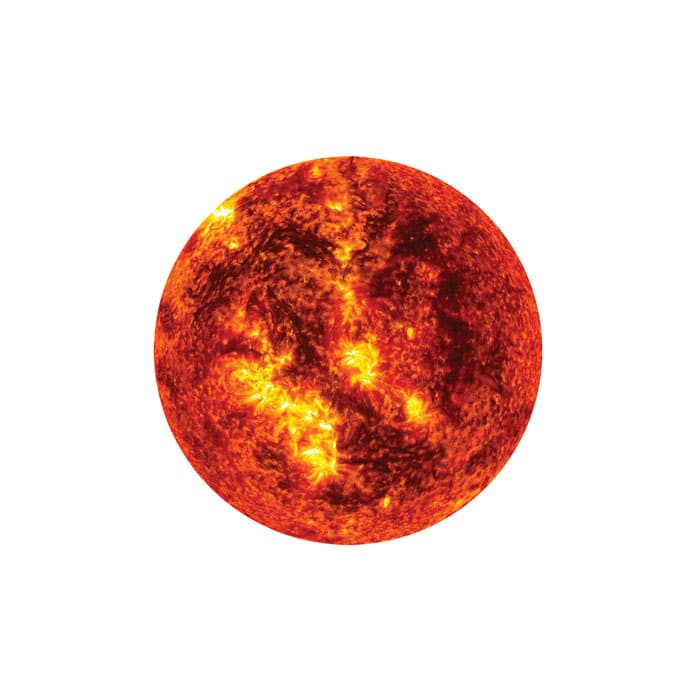The Sun is our star, similar to billions of others in the universe. At 4.6 billion years old, it is halfway through its life. In about 5 billion years, it will become a red giant so large that it will engulf all its planets. It accounts for 99.8% of the mass of the Solar System. The Sun rotates on itself in 25 Earth days and orbits its galaxy, the Milky Way, in 200 million years.

| Caractéristiques | Soleil | Terre |
| Diamètre | 1 394 000 km | 12 750 km |
| Rapport de masse | 333 000 | 1 |
| Puissance rayonnée | 385 millions de milliard de gigawatt* | |
| Température de surface | 5 500 °C | |
| Température du noyau | 15 millions °C | |
| Distance de la terre | 150 millions de km | |
| Âge | environ 4,6 milliards d’années | |
| Espérance de vie | 10 milliards d’années |
The formation of the Sun, like that of all stars, is a fascinating process that takes place over millions of years. Here are the main stages of this process:
1. Solar Nebula
The Sun formed from a solar nebula, an immense cloud of gas and dust in interstellar space. This cloud contained mainly hydrogen and helium, with traces of heavier elements. The solar nebula itself was formed from matter enriched with heavy elements by several previous generations of stars, in particular by supernovae (implosion of a star at the end of its life).
2. Gravitational Collapse
A disruptive event, such as a shockwave from a nearby supernova, may have triggered the gravitational collapse of the solar nebula. As the nebula collapsed under its own gravity, it began to spin and contract, forming a protoplanetary disk with a concentrated mass at the center.
3. Formation of the Proto-Sun
At the center of this contracting nebula, a dense region called the “Proto-Sun” formed. Gravitational compression in this region led to increasing temperature and pressure, reaching extremely high levels. Meanwhile, the rest of the protoplanetary disk started forming around the Proto-Sun, giving rise to the first planetary embryos and solid particles.
4. Onset of Nuclear Fusion
When the temperature at the core of the Proto-Sun reached around 10 million degrees Celsius, conditions became suitable for nuclear fusion. At this stage, hydrogen nuclei began fusing into helium, releasing a massive amount of energy in the form of light and heat. This event marked the official birth of the Sun as a star.
5. Hydrostatic Equilibrium
Nuclear fusion generates outward radiation pressure that counterbalances the gravitational force pulling the Sun inward. This balance, known as hydrostatic equilibrium, allowed the Sun to stabilize its size and brightness. At this stage, the Sun became a star as we know it today.
6. Clearing of the Protoplanetary Disk
Powerful solar winds and radiation pressure from the young Sun blew away the remaining gas and dust from the protoplanetary disk, influencing the final formation of planets and other celestial bodies in the solar system. This clearing process took several million years.
Today, the Sun is a star, approximately halfway through its 10-billion-year life cycle. It continues to fuse hydrogen into helium in its core, providing the essential light and heat that sustain life on Earth.
